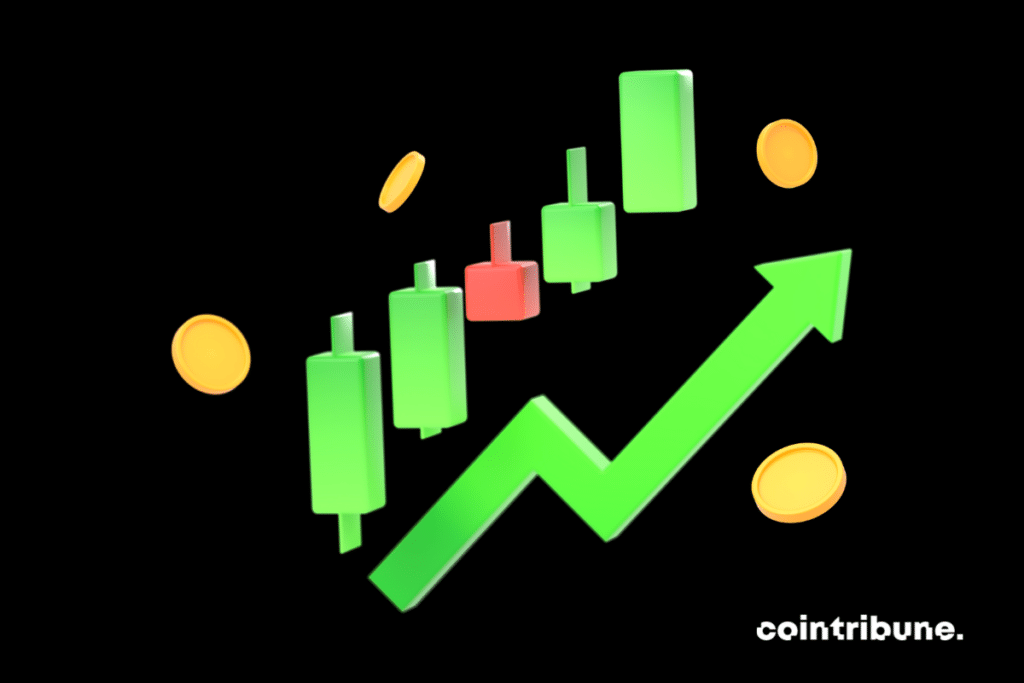Can We Predict an Increase in the Altcoin Market?
The altcoin market, with its rapid dynamics and potential opportunities, is garnering increasing interest among cryptocurrency investors. These alternatives to Bitcoin, though promising, come with notable challenges, particularly in predicting their market movements. The ability to anticipate an uptrend or downtrend in altcoins can be key to success for investors, but it requires a deep understanding of the various factors influencing these digital assets. This article aims to detail the methods used to predict altcoin trends while highlighting the associated risks and limitations.

Factors Influencing the Altcoin Market
The altcoin market, these alternative currencies to Bitcoin (BTC), is a complex and dynamic ecosystem. Several key factors influence their value and popularity, directly impacting investors’ decisions and the overall course of these digital assets.
Bitcoin’s Influence on Altcoins
Bitcoin, as the first and primary cryptocurrency, has a significant impact on the altcoin market. Often considered a barometer of the sector, BTC price movements can have immediate repercussions on altcoins. A rise in Bitcoin’s price can lead to an influx of capital into the altcoin market. Conversely, a decline in BTC price can lead to general mistrust in cryptocurrencies, negatively affecting altcoins. This correlation shows that, despite their independence, altcoins are closely tied to Bitcoin’s fortunes.
Technological Innovations and Adoption
Altcoins are often distinguished by their technological innovations, offering different or improved features compared to Bitcoin. These innovations may include faster transaction speeds, better energy efficiency, or more advanced smart contract capabilities. When an altcoin introduces a significant innovation, it can attract investors’ attention and increase its value. Additionally, adoption of these currencies by businesses and consumers plays a crucial role. Broader adoption means increased recognition and confidence in the currency, which can lead to increased demand and thus price.
Economic and Regulatory Factors
Altcoins, like any other form of asset, are influenced by the global economic climate. Monetary policy decisions, fluctuations in traditional markets, and even geopolitical events can influence the cryptocurrency market. For example, in times of economic uncertainty, some investors turn to cryptocurrencies as a safe haven, which can increase demand for altcoins. On the other hand, government regulation of cryptocurrencies can also have a profound impact. Favorable regulations can encourage investment in altcoins, while restrictive measures can lead to decreased confidence and price.

Methods for Predicting an Altcoin Market Uptrend
Predicting an uptrend in the altcoin market is a complex challenge, requiring a deep understanding of market dynamics. Investors and analysts use various methods to attempt to decipher future trends, each offering unique perspectives on potential price movements.
Technical Analysis
Technical analysis is a key approach in predicting altcoin price movements. It involves examining historical price charts to identify patterns and trends. Investors focus on indicators such as moving averages, Bollinger Bands, and the Relative Strength Index (RSI) to assess market dynamics. For example, a high RSI may indicate a potentially overbought altcoin, suggesting a correction is imminent. Conversely, a low RSI can signal undervaluation, indicating a buying opportunity. These indicators, combined with analysis of chart patterns and support and resistance levels, help formulate predictions about future price movements. However, technical analysis is not infallible and should be used in conjunction with other methods for more accurate prediction.
Fundamental Analysis
Fundamental analysis focuses on intrinsic factors that can influence an altcoin’s value. This method examines aspects such as underlying technology, use cases, community strength, strategic partnerships, and competition in the cryptocurrency space. For example, an altcoin that announces a major partnership or launches a significant technological innovation may see its price increase. Fundamental analysis requires a deep understanding of the cryptocurrency market and an ability to assess the potential impact of news and developments on altcoin value.
Market Sentiment Analysis
Market sentiment analysis is a method that evaluates the overall attitude of investors and market participants toward a specific altcoin or the cryptocurrency market as a whole. Sentiment analysis tools scrutinize various sources, including social media, forums, news, and blogs, to gather data on public opinion. General positive sentiment may indicate an imminent rise in an altcoin’s price, while negative sentiment may signal a potential decline. This method can provide valuable insights, but it is also subject to rapid emotional reactions and sudden changes, making predictions less reliable.
Limits and Risks to Consider
When it comes to predicting an uptrend in the altcoin market, investors must navigate with caution. They must remain aware of inherent limits and risks. Extreme volatility is a key feature of the cryptocurrency market. Asset prices can undergo drastic variations in a short period. This instability makes predictions particularly risky, as even the most sophisticated analyses cannot guarantee complete accuracy.
Moreover, the altcoin market is influenced by a multitude of external factors, such as regulatory decisions, technological advancements, and global economic trends, which can suddenly reverse market trends. Investors must also be vigilant against market manipulation and fraud risks, more prevalent in a less regulated sector. Finally, it is important to recognize that altcoins, being relatively new digital assets, entail long-term uncertainties regarding their adoption and integration into the global financial ecosystem.
Conclusion
Predicting an uptrend in the altcoin market is a complex task. While methods such as technical analysis, fundamental analysis, and market sentiment analysis offer valuable tools, investors must exercise caution. The inherent volatility of the cryptocurrency market, combined with the influence of external factors and the risk of manipulation, demands a balanced and informed approach. It is important to acknowledge the limits of these predictions and understand the risks before diving in.
Maximize your Cointribune experience with our "Read to Earn" program! For every article you read, earn points and access exclusive rewards. Sign up now and start earning benefits.
The Cointribune editorial team unites its voices to address topics related to cryptocurrencies, investment, the metaverse, and NFTs, while striving to answer your questions as best as possible.
The views, thoughts, and opinions expressed in this article belong solely to the author, and should not be taken as investment advice. Do your own research before taking any investment decisions.